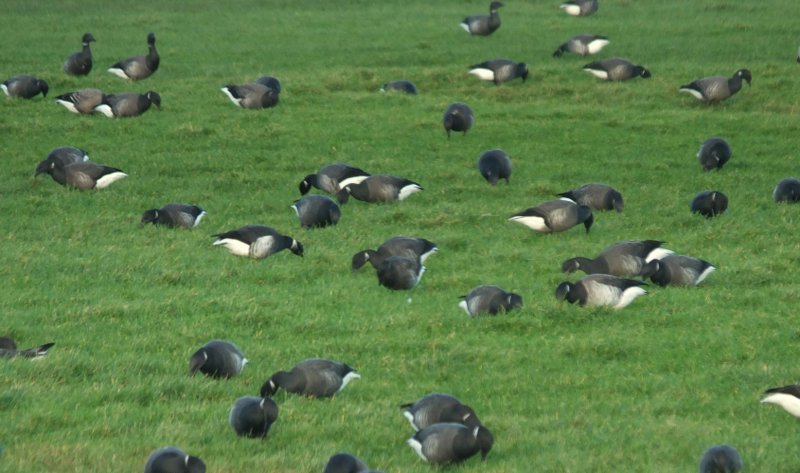Fotogalerij
| Mozaïek |
| Zeldzame soorten |
| Schaarse soorten |
| Overige |
| WP-soorten |
| Wereld-soorten |
| Determinatie |
| Historie |
| Dutch Bird Alerts |
| Dutch Birding 40 jaar |
| België |
| Belgian Bird Alerts |
| Zeldzaamheden België |
Zwarte Rotgans
Branta nigricans · Black Brant
| Datum | 13 december 2015 |
|---|---|
| Locatie | Stroe |
| Fotograaf |
|
| Bekeken | 6474 × |
Discussie
Aad van der Ent · 14 december 2015 21:04
Max Berlijn · 15 december 2015 07:23
Arnoud B van den Berg · 16 december 2015 00:44
Max Berlijn · 16 december 2015 06:15, gewijzigd 16 december 2015 06:38
Arnoud B van den Berg · 16 december 2015 11:11
Arnoud B van den Berg · 16 december 2015 11:12
Arnoud B van den Berg · 16 december 2015 17:18
Max Berlijn · 16 december 2015 20:27
Wilma van Holten · 17 december 2015 21:06
Arnoud B van den Berg · 19 december 2015 21:02
Fred Visscher · 9 maart 2016 21:12
Gebruikers van het forum gaan akkoord met de forumregels.
Forum spelregels
Dutch Birding Association beoogt met het forum in de fotogalerij de lezer een platform te bieden waarop informatief en inhoudelijk gediscussieerd kan worden over zeldzame en schaarse vogels. Het forum staat daarmee in het verlengde van het (semi-) wetenschappelijke karakter van het blad Dutch Birding.
Om het gebruik van het forum in goede banen te leiden, heeft Dutch Birding de volgende regels opgesteld: de moderatoren kunnen reacties verwijderen die
- een degelijke onderbouwing van de determinatie missen
- als beledigend of kwetsend kunnen worden ervaren door andere forumgebruikers
- off-topic zijn
- spam of reclame bevatten
- zij beschouwen als trolling
Auteurs die zich niet houden aan de bovenstaande regels krijgen een waarschuwing en bij herhaling van het overtreden van bovenstaande regels behoudt het DBA bestuur zich het recht voor om het account van de auteur te blokkeren.
De moderatoren hebben het recht om zonder opgaaf van reden, onder verwijzing naar de spelregels, reacties te verwijderen.
Erger je je aan het trollen van anderen, realiseer je dan dat met niet-reageren cq doodzwijgen het trollen het snelst stopt. Reageer niet! Sein de moderatoren in via foto@dutchbirding.nl, zodat zij gepaste actie kunnen ondernemen.


